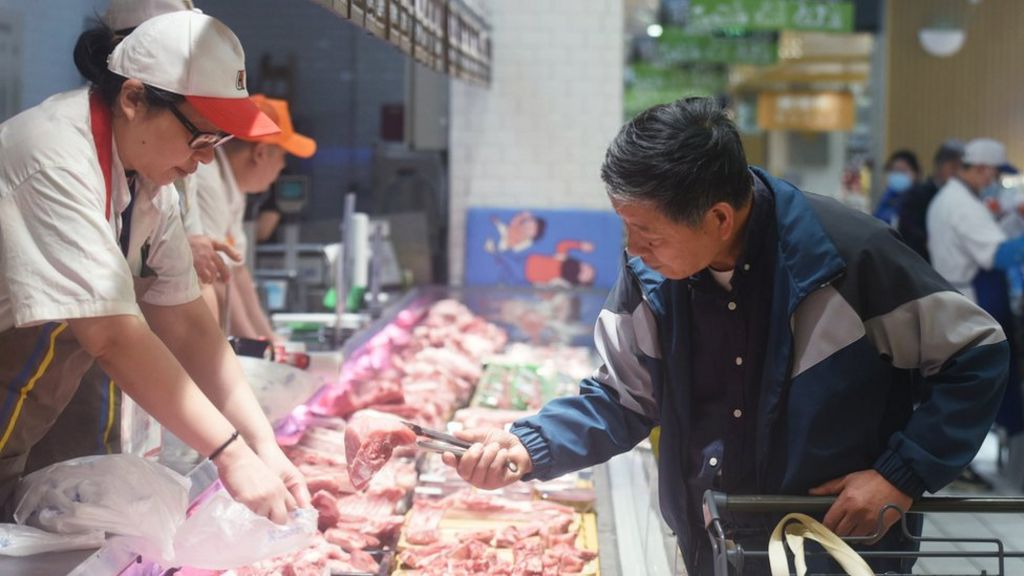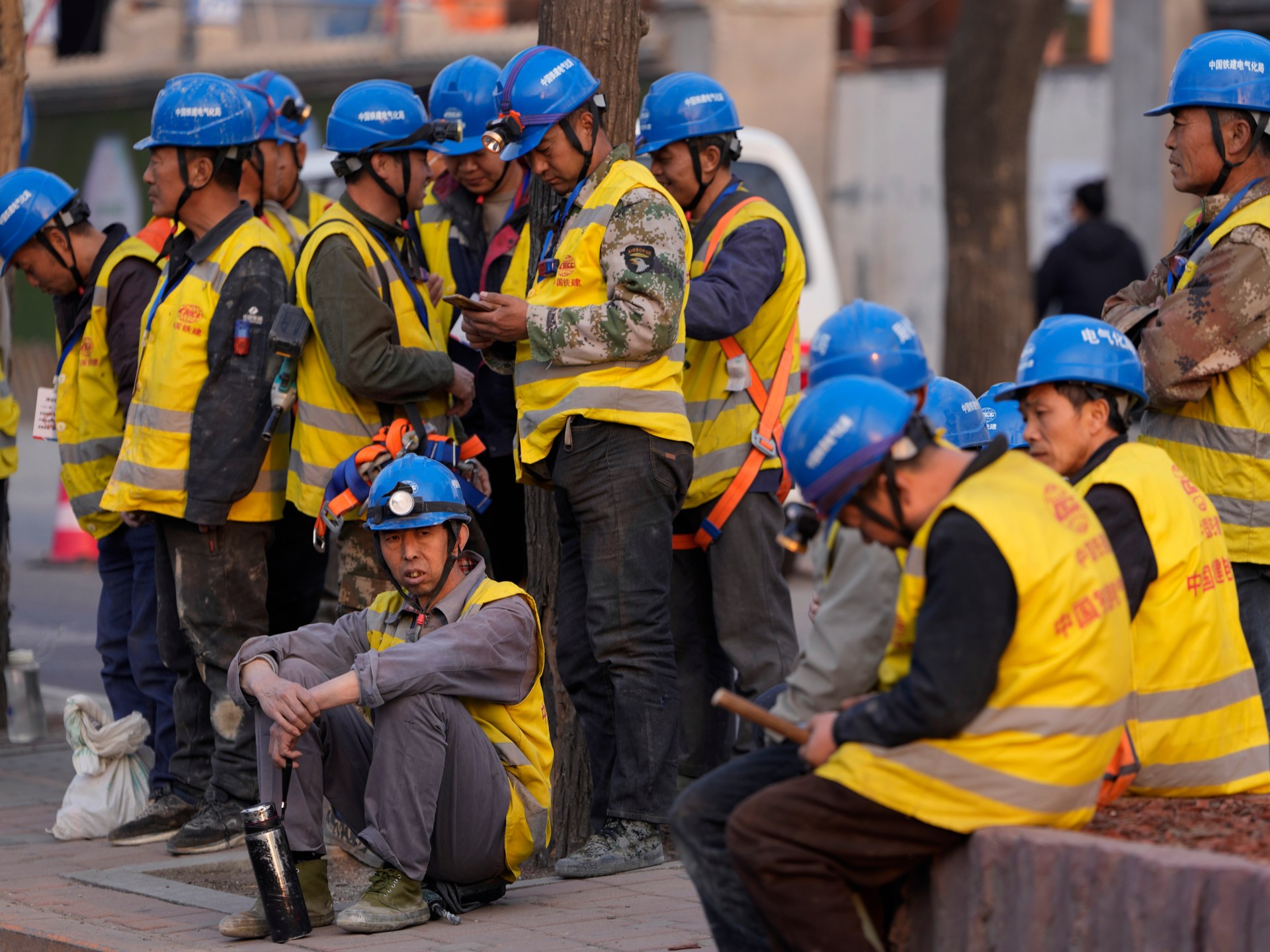Economy
Indian economy to get shot in the arm from federal budget
|
|

By Tushar Goenka and Shaloo Shrivastava
BENGALURU (Reuters) – India’s path to economic recovery will be stronger than previously thought as fiscal expansion and vaccine hopes help the country heal from COVID-19, a Reuters poll of economists showed.
The world’s second-most populous country has begun a huge vaccination drive and a steep fall in new coronavirus cases over the past few months is supporting a recovery in Asia’s third-largest economy.
Alongside that, nearly 60% of respondents, 18 of 31, who responded to an additional question in the Jan. 13-25 poll said India’s federal budget, due on Feb. 1, would help a significant economic recovery in financial year 2021/22 and has already sent stocks to record highs.
“We expect global economic activity to return to normality in fiscal Q2 and India to grow in fiscal 2021/22, with government stimulus packages expecting to contribute,” said Hugo Erken, head of international economics at Rabobank.
“There is a strong sentiment the budget will aim to continue expenditure as growth is the only way India can come out of recent setbacks.”
The poll of over 50 economists showed the economy would grow 9.5% next fiscal year – the highest since polling began for the year in March 2020 – after contracting 8.0% in the current fiscal year.
It was expected to grow 6.0% in fiscal year 2022/23. The poll predicted the economy would grow 21.1%, 9.1%, 5.9% and 5.5% in each quarter of the 2021/22 fiscal year, largely upgraded from a poll taken two months ago.
But when asked how long it would take for the economy to recover to its pre-COVID-19 level, 26 of 32 respondents said it would take up to two years, including six analysts said longer than that. Twelve analysts said within a year.
“There is a lack of fiscal space to boost growth sufficiently and India is unlikely to reach its pre-COVID-19 levels any time soon despite policy support,” said Sher Mehta, director at Virtuoso Economics.
“Economic momentum will struggle to gain traction as there are fears of stagflation and the possible end of monetary policy easing.”
The Reserve Bank of India, which has slashed its main repo rate by 115 basis points since March 2020 to cushion the shock from the coronavirus crisis, was expected to keep its benchmark lending rate at 4.0% through at least 2023.
That was a shift in expectations from a survey taken two months back when a 25 basis point cut to 3.75% was predicted in the April-June period.
WILL BORROW MORE
India’s government will focus on fiscal expansion in next week’s budget and revise its borrowing target higher for the 2021/22 fiscal year, prompted by the expected economic slowdown and weak jobs growth, according to the latest poll.
Government borrowing has ballooned due to pandemic spending while revenues have severely dampened.
The median forecast showed the government would revise its fiscal deficit target for next fiscal year up to 5.5% from 3.3% of gross domestic product.
Around 55% of economists, 18 of 33, who answered an additional question about the focus of the budget said it would be more on fiscal expansion than prudence.
“Tight fiscal policy can do lasting damage by hurting potential growth that would have been negatively affected on account of the pandemic,” said Abhishek Upadhyay, senior economist at ICICI Securities PD.
(For other stories from the Reuters global long-term economic outlook polls package:)
(Reporting by Tushar Goenka and Shaloo Shrivastava; Polling by Vivek Mishra and Md. Manzer Hussain; Editing by Jonathan Cable and Steve Orlofsky)
Source: – The Guardian
Economy
China economy grows faster than expected in first quarter – BBC.com


China’s economy made a stronger-than-expected start to the year, even as the crisis in its property sector deepened.
According to official data, gross domestic product (GDP) expanded by 5.3% in the first three months of 2024, compared to a year earlier.
That beat expectations the world’s second largest economy could see growth slow to 4.6% in the first quarter.
Last month, Beijing set an ambitious annual growth target for world’s second largest economy of “around 5%”.
Data from the National Bureau of Statistics (NBS) also showed first quarter retail sales growth, a key gauge of China’s consumer confidence, fell to 3.1%.
“You cannot manufacture growth forever so we really need to see households come to the party if China wants to hit that around 5% growth target,” Harry Murphy Cruise from Moody’s Analytics told the BBC.
In the same period property investment fell 9.5%, highlighting the challenges faced by China’s real estate firms.
The figures came as China continues to struggle with an ongoing property market crisis. According to the International Monetary Fund (IMF), the sector accounts for around 20% of the economy.
The latest data also showed new home prices fell at the fastest pace for more than eight years in March.
The real estate industry crisis has been highlighted in January when property giant Evergrande was ordered to liquidate by a court in Hong Kong.
Rival developers Country Garden and Shimao have also been hit with a winding-up petitions in the city.
Last week, credit ratings agency Fitch cut its outlook for China, citing increasing risks to the country’s finances as it faces economic challenges.
At the annual gathering of China’s leaders in March officials said the economy grew by 5.2% in 2023.
For decades the Chinese economy expanded at a stellar rate, with official figures putting its GDP growing at an average of close to 10% a year.
Economy
Stumbling Toward a Deal — as the Economy Surges – AGF Perspectives


Insights and Market Perspectives
CONGRESS IS STUMBLING TOWARD PASSAGE of legislation late this week that would provide enormous aid to Ukraine, Israel and Taiwan. It’s a VERY messy process — typically — that has obscured the major development for financial markets: red hot economic growth, far exceeding expectations.
WE’LL GET TO THE CONGRESSIONAL BRAWL in a second, but first — dramatic economic growth is having a major impact on interest rates, with the Atlanta Fed GDP Now predicting economic growth at 2.8%, after yesterday’s blowout retail sales report.
EVEN CHINA, considered a basket case a few months ago, is blasting off — with Beijing reporting 5.3% first quarter economic growth.
WITH THE U.S. TEN YEAR BOND YIELD now above 4.5%, this has to be a shock for the Federal Reserve, which may be frozen for months to come — unable to cut rates as long as the economy is growing above trend with inflation not falling to the Fed’s 2% goal.
THERE SURELY WON’T BE ANY FISCAL RESTRAINT, as Congress moves awkwardly toward passage of a nearly $100 billion spending package for allies.
THIS IS A VERY FLUID fluid environment — even a Tik-Tok ban is included — with House Speaker Mike Johnson preparing four separate bills in a dizzying process that may require support from Democrats — which could cost Johnson his job.
BOTTOM LINE: This is sausage-making at its ultimate, as Democrats prepare to bail out Johnson, as angry right wingers demand provisions to protect the border, and as aid seems increasingly likely — surely for Israel, probably for Ukraine. It’s only Tuesday, there’s a long way to go; details won’t come into focus for a few more days.
IN THE MEANTIME, THE ECONOMY CONTINUES TO ROAR — it’s too strong, in our opinion, to be sustainable.
THESE DRAMATIC STORIES MAY HAVE TO TAKE A BACK SEAT as the gleeful media is obsessed with the Donald Trump trial. The buzz after the first day was whether Trump dozed off yesterday during the jury selection process, Our advice to Trump — get some espresso, the last thing you want is opponents calling you “sleepy Don.”
The views expressed in this blog are those of the author and do not necessarily represent the opinions of AGF, its subsidiaries or any of its affiliated companies, funds or investment strategies.
The views expressed in this blog are provided as a general source of information based on information available as of the date of publication and should not be considered as personal investment advice or an offer or solicitation to buy and/or sell securities. Speculation or stated believes about future events, such as market or economic conditions, company or security performance, or other projections represent the beliefs of the author and do not necessarily represent the view of AGF, its subsidiaries or any of its affiliated companies, funds or investment strategies. Every effort has been made to ensure accuracy in these commentaries at the time of publication; however, accuracy cannot be guaranteed. Market conditions may change and AGF accepts no responsibility for individual investment decisions arising from the use of or reliance on the information contained herein. Any financial projections are based on the opinions of the author and should not be considered as a forecast. The forward looking statements and opinions may be affected by changing economic circumstances and are subject to a number of uncertainties that may cause actual results to differ materially from those contemplated in the forward looking statements. The information contained in this commentary is designed to provide you with general information related to the political and economic environment in the United States. It is not intended to be comprehensive investment advice applicable to the circumstances of the individual.
AGF Investments is a group of wholly owned subsidiaries of AGF Management Limited, a Canadian reporting issuer. The subsidiaries included in AGF Investments are AGF Investments Inc. (AGFI), AGF Investments America Inc. (AGFA), AGF Investments LLC (AGFUS) and AGF International Advisors Company Limited (AGFIA). AGFA and AGFUS are registered advisors in the U.S. AGFI is a registered as a portfolio manager across Canadian securities commissions. AGFIA is regulated by the Central Bank of Ireland and registered with the Australian Securities & Investments Commission. The subsidiaries that form AGF Investments manage a variety of mandates comprised of equity, fixed income and balanced assets.
About AGF Management Limited
Founded in 1957, AGF Management Limited (AGF) is an independent and globally diverse asset management firm. AGF brings a disciplined approach to delivering excellence in investment management through its fundamental, quantitative, alternative and high-net-worth businesses focused on providing an exceptional client experience. AGF’s suite of investment solutions extends globally to a wide range of clients, from financial advisors and individual investors to institutional investors including pension plans, corporate plans, sovereign wealth funds and endowments and foundations.
For further information, please visit AGF.com.
©2024 AGF Management Limited. All rights reserved.
Economy
China’s economy beats expectations, growing 5.3 percent in first quarter – Al Jazeera English


Statistics agency says economy has made ‘good start’ to the year under the leadership of Chinese President Xi Jinping.
China’s economy grew faster than expected in the first three months of the year, a boost for policymakers grappling with a property-sector crisis, weak consumer demand and mounting government debt.
Gross domestic product (GDP) grew by 5.3 percent in the first quarter, data released by the National Bureau of Statistics (NBS) showed on Tuesday, comfortably above forecasts and up from a 5.2 percent expansion in the previous quarter.
By sector, industrial production and agriculture grew by 6.1 percent and 3.8 percent, respectively, while services grew by 5 percent, according to NBS data.
The NBS said in a statement that the economy had made a “good start” under “the strong leadership” of the Central Committee of the Communist Party of China and President Xi Jinping.
“As a result, the policies continued to take effect, production and demands maintained stable and witnessed an increase, employment and prices were generally stable, market confidence continued to boost, and high-quality development made new progress,” the statistics agency said.
The stronger-than-expected figures came days after China reported that exports and imports declined 7.5 percent and 1.9 percent, respectively, in March, missing expectations.
The world’s second-largest economy has struggled to sustain a recovery from the COVID-19 pandemic amid a range of longstanding structural challenges, including a hugely indebted real estate sector and a shrinking population.
Fitch Ratings earlier this month downgraded China’s sovereign credit outlook to negative, citing “increasing risks to China’s public finance outlook” as Beijing attempts to move away from real estate-led growth.
Beijing last month set a 5 percent growth target for 2024, a rate that would beat most developed economies but be among the country’s slowest expansions since 1990.
Officials have unveiled a number of fiscal and monetary policy measures to boost the economy, including $1.8 trillion in spending on major construction and infrastructure projects.
-
Media22 hours ago
DJT Stock Plunges After Trump Media Files to Issue Shares
-
Business21 hours ago
FFAW, ASP Pleased With Resumption of Crab Fishery – VOCM
-
Media21 hours ago
Marjorie Taylor Greene won’t say what happened to her Trump Media stock
-
Business22 hours ago
Javier Blas 10 Things Oil Traders Need to Know About Iran's Attack on Israel – OilPrice.com
-



 Politics22 hours ago
Politics22 hours agoIn cutting out politics, A24 movie 'Civil War' fails viewers – Los Angeles Times
-
Art23 hours ago
It’s Time to Remove Father Rupnik’s Art – National Catholic Register
-
Business20 hours ago
Tesla May Be Headed For Massive Layoffs As Woes Mount: Reports – InsideEVs
-
Investment23 hours ago
A Once-in-a-Generation Investment Opportunity: 1 Top Artificial Intelligence (AI) Stock to Buy Hand Over Fist in April … – Yahoo Finance





